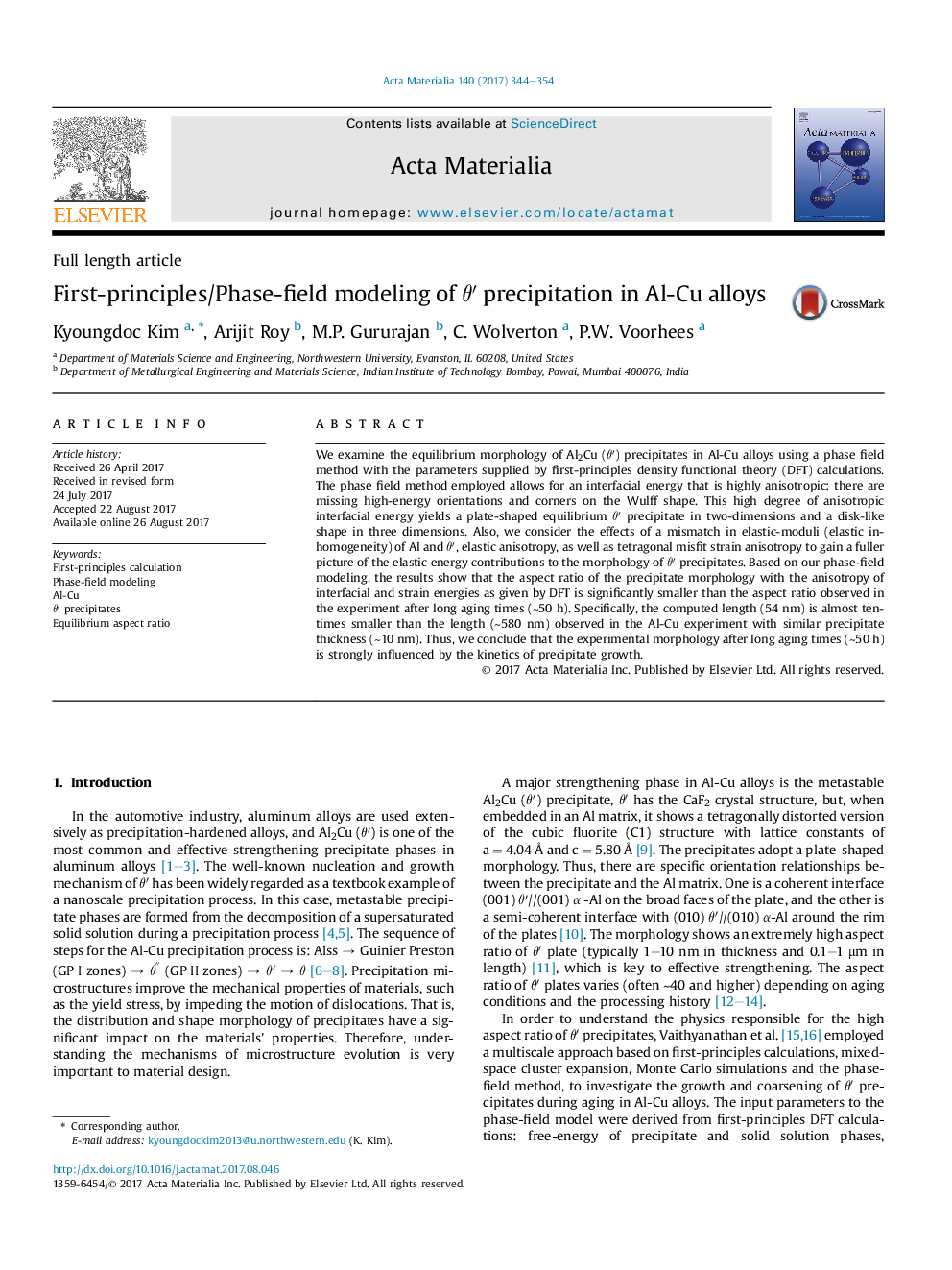| Article ID | Journal | Published Year | Pages | File Type |
|---|---|---|---|---|
| 5435782 | Acta Materialia | 2017 | 11 Pages |
We examine the equilibrium morphology of Al2Cu (θâ²) precipitates in Al-Cu alloys using a phase field method with the parameters supplied by first-principles density functional theory (DFT) calculations. The phase field method employed allows for an interfacial energy that is highly anisotropic: there are missing high-energy orientations and corners on the Wulff shape. This high degree of anisotropic interfacial energy yields a plate-shaped equilibrium θⲠprecipitate in two-dimensions and a disk-like shape in three dimensions. Also, we consider the effects of a mismatch in elastic-moduli (elastic inhomogeneity) of Al and θâ², elastic anisotropy, as well as tetragonal misfit strain anisotropy to gain a fuller picture of the elastic energy contributions to the morphology of θⲠprecipitates. Based on our phase-field modeling, the results show that the aspect ratio of the precipitate morphology with the anisotropy of interfacial and strain energies as given by DFT is significantly smaller than the aspect ratio observed in the experiment after long aging times (â¼50 h). Specifically, the computed length (54 nm) is almost ten-times smaller than the length (â¼580 nm) observed in the Al-Cu experiment with similar precipitate thickness (â¼10 nm). Thus, we conclude that the experimental morphology after long aging times (â¼50 h) is strongly influenced by the kinetics of precipitate growth.
Graphical abstractDownload high-res image (197KB)Download full-size image
